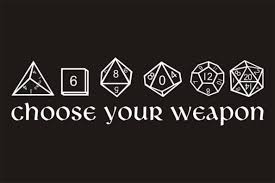Apologies for my recent absence. I don’t really have an excuse. Life just gets short on spoons occasionally. (For those who aren’t aware of Spoon Theory, I can’t recommend reading it highly enough. It isn’t only applicable to those with illnesses.)
Anyway, I’m making an effort to get back in the saddle. This is largely prompted by the upcoming Nine Worlds Convention – a three-day celebration of all things geek. My experience of conventions is comparatively limited but I had an absolute ball at the World Fantasy Convention back in 2013 so I’m hugely looking forward to this. Not least because I’ve got myself involved in speaking on a panel discussion about the use of research in world-building.

Obviously there’s a HUGE amount to say on this subject and I’ve said much of it already on this blog. Important points include:
- Building on existing cultures to give your audience an easy and textured hook into your setting
- Picking something small (such as currency) and extrapolating from there
- Stealing random ideas from history, because it’s frequently weirder than fiction
- Avoiding jarring your audience out of immersion by Not Getting Things Wrong
The context of this particular discussion, however, revolves specifically around building worlds that the audience will interact with, be it in computer games, LARP, or collaborative storytelling. I’ve been asked to get involved due to London Under, and the research that was done there to bring local history into the game.
One of my aims with the London Under setting was to blur the line between reality and fantasy as much as possible, in order to bring my audience deeper into the world. To that end, I tied in the history of the immediate area as well as news stories. Many of the fantastical plots stemmed from a real-life event. The building of the Thames Tideway Tunnel, for example, became a major point of gang territorial warfare; the Dutch Elm Disease of the late 1960s was revealed to be a piece of biological terrorism committed by one sect of dryads against another. I wanted people to walk down a street, or read a newspaper, weeks later and know something about it – partly true, partly fantastical, and occasionally difficult to tell where the line was.
There’s an obvious problem with this, which is the issue of timeliness. Using current news stories means that the setting and plot has a very high risk of dating quickly. Anything based on, for example, Thatcherism feels old fashioned now and that sense of the old-fashioned will carry over in the audience’s mind into your world setting. On the other hand, if done well, it gives your world an extra dimension of historical reality – one you don’t need to explain in detail because the audience will fill in the gaps for you. And that unconscious gap-filling means they are more emotionally invested in your setting. They understand something about it, have brought it closer to their own world, and it’s more real to them as a result.
To be honest, I’ve no idea what the panel discussion will end up covering on the day. Do come along and find out! My dear friend Dr. Nick will, in a weird quirk of coincidence, also be taking part (doctorate in naval architecture = really good at designing spaceships and dirigibles), as will Jeanette Ng and Russell Smith. Let me know if you think there are any other points or questions that ought to be raised. And please come say hi – it would be lovely to see you there. 🙂






